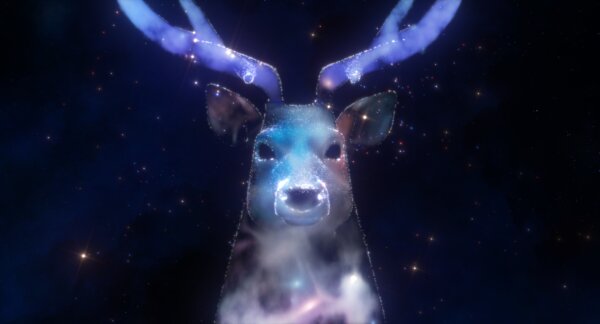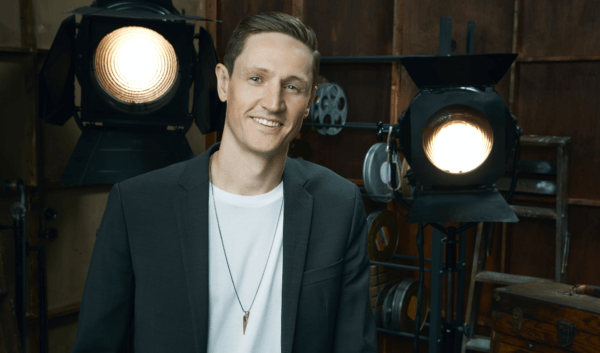Disney’s Short Circuit – Director Roundtable Part One
In spite of the lockdown there appears to be something of a creative boom happening at Walt Disney Animation Studios at the moment. Short films, of the kind that sustained the early years of the studio which lead towards the kind of innovations that made the feature films famous have been commissioned once more for a modern audience and can now be viewed now Disney +.
At around 90 seconds each the shorts in the Short Circuit programme pack a lot of work into a scant amount of time but invite viewers into spaces where they can indulge in character, world building and story. Each short is directed by a Disney employee who pitched the idea before working with the studios talent to make their film a reality.
We sat down with four of the directors, Trent Correy, director of 2D/CG hybrid Drop; Jeff Gipson, the director of VR short Cycles; Jennifer Stratton who directed the musically driven Zenith and director of the graffiti inspired Downtown Kendra Vander Vliet, in part one of the two part interview where we explore the process that went into making the Short Circuit films.
What drew you all to the Short Circuit programme?
Kendra Vander Vliet (Downtown) – I actually wanted to try something that was kind of anime inspired. Something with really crazy cameras, a different cinematography look than what I’m normally asked to do on the features. I thought about putting my name in the hat and seeing if maybe, maybe I could try it. I didn’t think I’d actually ever get picked. I didn’t get into this wanting to actually be a director, but it ended up kind of being a blessing in disguise and I learned so much by doing it.
Trent Correy (Drop) – When I was in the program, it was the first wave of Short Circuit. The biggest attraction for me is that it’s literally the coolest gig ever, because you get paid for three months to make your own idea! You have access to the best Disney artists to help you out and collaborate with you. It’s like a dream come true because you have people that have worked at Disney for 20-30 years just jumping at the opportunity to work on your little short, it’s kind of mind blowing! Anytime we can have a chance to just make something with people and collaborate with other departments we go for it, I think it is a blast. So it really was just kind of a fun and experimental experience.
Jeff Gipson (Cycles) – Yeah, I think I kind of echo what Trent says working with really talented people. But what’s also great about the program is that there’s this idea of risk taking and innovation, telling different types of stories and making them in different ways. It was great, having that opportunity to make the studios first VR short film in a real time engine, like Unity, and then having these amazing artists and amazing technologists tackle that challenge as well because they had never made a film in real time engine before. So everybody banding together and creating something in a new kind of idea of innovation and exploration was just incredible.
Jennifer Stratton (Zenith) – I never dreamed that the opportunity would be there for me. So when the first round of shorts were selected, when Trent made his short, I had started something but I wasn’t able to get my idea prepped at the time. So I was really bummed out that I missed out on the opportunity. And so when the second round came around, I’m like, “Alright, there’s no way I’m giving up on this chance again, who knows if I’ll ever have this opportunity.” I think everyone’s been saying, who would ever imagined you’d be able to go to Disney and direct your own short and put your own ideas out there. It was a very unexpected, amazing experience for me as well.
Jennifer you worked on on Zenith which, in your own words, it’s something of a Fantasia homage. Can you tell us more about the inspirations that led to the film and how working with your composer shaped the short?

Zenith – Directed by Jennifer Stratton
Jennifer – Fantasia has been a big part of just who I’ve become as an artist. I watched it over and over again growing up, and music was a big part of my life. So that was something that was really important to me. I was introduced to Nathan Curtis, the composer and it was really refreshing. I have always been involved in a musical world growing up and then to be matched up with Nathan felt like I had found someone who I could speak my own language with again, so that was a really amazing collaboration. He was very receptive to my ideas and when we discussed my ideas in pre production he could visualise it, so that was really amazing. And the effects of course, were really important to me to use in the short and it was a way to experiment to give that different look than what we’re used to. So I think that combining those things together, they kind of inspired each other.
Jeff, before animating at Disney and directing Cycles you have a background as an architect, what sold you on the move from being an architect to being an animator?

Jeff Gipson – Director of Cycles
Jeff – Growing up I always loved animation, I was also always in the BMX world and skateboarding so I actually went to architecture school to design skate parks. I could have designed skate parks forever but I really loved doing the digital rendering. Well, it’s my favourite part of doing work. And so I got my master’s in architecture and decided to just switch because I love making images more than I did the building and always had that dream of pursuing animation. I decided to just chase that dream and ended up at Disney working on all of our films. Allowing this opportunity to tell a story where the home – a piece of architecture was a character and as important as the human characters in the film was incredible, kind of a weird, roundabout way of creating films and architectural animation, but it’s a cool experience.
Trent, you had the idea for Drop long before the shorts programme about “something that could go anywhere” how did the idea evolve over time?
Trent – Yeah, that’s correct. Steve, we actually started developing it back in 2014. When I was working on Big Hero 6, it was kind of like a long time in the making, and I developed it with a friend of the studio named Bobby Pontius. At the time we were kind of aiming it to be a seven minute theatrical short, something like a larger picture. But when Short Circuit came around, and they introduced this idea of it being an experimental program, we were kind of offered as the first people to go in for it, I was just thrilled because just like Jen and everyone else says, like, you don’t know if and opportunity like that is going to come again.

Drop – Directed by Trent Correy
So what I kind of decided to do was take a moment from the bigger short idea that I was planning, and try to make that into a little short, but for me, the exciting thing was coming from the animation department was trying to create a character. My experimental version of the short is trying to create a character that’s organic, that looks different than what we typically do. And you know, working with the riggers and the lighters to kind of do something different. So that’s something that really drove me to one of the first shorts for the program. And actually kind of a fun fact about this group is I think we all worked on each other’s short at some point. I worked on Jen’s short I’m sure Jen’s worked on Jim’s short etc, you know, everybody in this circle kind of helps out other directors and other shorts, which is kind of fun.
Kendra, working on Downtown you had this freedom to work on a project that isn’t quite the day job, does this put you in a different mindset and are there different responsibilities that come with directing a short for the Short Circuit program?
Kendra – Yeah, it kind of forces you to step up to the plate a little bit more than what you might do as a normal artist. Suddenly, you’re in a room and people kind of need guidance instead of me sitting in the back of the room being a little more quiet. But the wonderful thing is, I’m slightly more introverted so it was a lot of personal growth on top of artistic growth, you learn to speak your mind and not be afraid. And then the people in the room with you, they’re there to support you and bring ideas to the table. So instead of seeing a position as a director and being terrified of it, you learn to kind of you love it and love the interaction with people and how it brings out that creativity and everybody.

Kendra Vander Vilet – director of Downtown
What’s impressive about the short, as well as about all the shots is that you all have around 90 seconds to tell a complete character arc. And in Downtown you have you have a character, which is faceless. And then you have the the art character, which I think you called Joy.
Kendra – I really wanted to try something that was very action based, and letting the action and the art tell the story versus a traditional story arc like with the character. By doing that we removed the facial expressions to see if we could challenge ourselves to have the effects and the lighting tell the story. And we kept Joy as a character to help guide you and maybe some of the emotional changes going through that was really fun and unique challenge because it’s very different than what we do in our features, where it’s very character and narrative based. It was fun trying to combine 2D animation with 3D art and living that kind of intertwine in an organic way to unfold a story.
Trent your shot obviously employs a lot of CG for the main character but you also employed the skills of Disney veteran Dan Lund as a 2D animator to animate the water and the effects within within Drop. Maybe you could tell us a little bit about that meshing of styles.
Trent – Oh, sure. Yeah, I think I can speak for a lot of the short circuit directors that say we all love a little Dan Lund and our short. Yeah, I think I feel like he’s worked on a lot of them. You know a few of us in the studio there definitely contributed a lot to these shorts and Dan’s one of them. And, you know, that came about because we had this kind of painterly, traditional look, we were going for it. My art director jimson kind of led that by just kind of exploring the painting styles. And we’re using meander to paint the characters, which is a tool that was developed for a Paperman years before. And Dan approached me and I mean, this is another huge thing about short circuit that I love is you have artists approaching you and saying, I want to work with you. I want to work on your film. And Dan, you know, I, Dan’s been around at the studio for almost 30 years. I think he worked on Little Mermaid. So when a guy like that comes to you and says, I want to animate water and you’re short, you say yes, I’d love to. And, you know, it’s just, I remember him showing me his first pass, and just being blown away. And to be honest, I don’t think we knew how we were We’re going to approach the effects because, you know, we wanted that painterly look. And really all I can say about his work is it just tied everything together? I mean, he, he did effects on every scene, I think whether it’s a shadow, or raindrops or lightning or clouds. And I think that just really helped to tie everything together in the short just, I love working with Dan.
Keep your eyes on our social media channels (Tiwtter, Facebook, Instagram) for part two of our Short Circuit interview and you can view the shorts on Disney + now.

